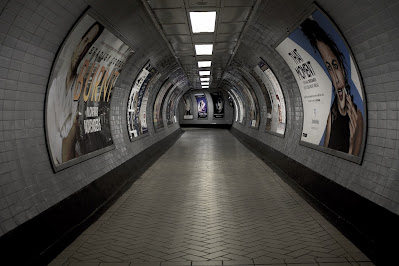Staying vigilant in public
- Get link
- X
- Other Apps
Staying vigilant in public is an essential aspect of personal safety and security. In today's world, there are numerous risks and dangers that one may face when in public, and it's imperative to stay alert and aware of one's surroundings. From criminal activities to natural disasters, there are many things that can go wrong, and being prepared can help reduce the chances of being caught off guard.
To understand the importance of staying vigilant in public, it's essential to first comprehend criminal activities that take place in public spaces. Criminal activities can range from petty theft to serious crimes like assault or terrorism. Understanding the motives behind these activities is crucial in developing strategies to prevent them. For example, if someone is mugging people, they may do it to acquire quick cash, while a terrorist attack may be motivated by political or ideological reasons. Regardless of the motive, criminal activities in public spaces can have a severe impact on both the victims and the wider community.
So, how can one stay vigilant in public? The first step is to be aware of one's surroundings. This means paying attention to what is happening around you and being mindful of any suspicious behavior. For instance, if you notice someone following you or loitering in a suspicious manner, it's essential to be cautious and take action to protect yourself.
Another important aspect of staying vigilant is to trust your intuition. If something doesn't feel right, it's essential to trust that gut feeling and take action to stay safe. For example, if you feel uncomfortable in a particular area or with a particular person, it's essential to remove yourself from the situation and seek help from authorities if necessary.
Traveling in numbers is another way to stay vigilant in public. If possible, avoid traveling alone, especially in unfamiliar or high-risk areas. When in a group, you can look out for each other and provide support and protection in case of any danger.
It's also crucial to keep valuables out of sight, as this can reduce the chances of becoming a target for theft. This means avoiding flashy jewelry or carrying expensive items in plain sight. Keeping your valuables in a secure place, such as a locked car or hotel room, can also help to reduce the risk of theft.
Another way to stay vigilant in public is to avoid distracted behavior. This means avoiding activities like texting or talking on the phone while walking, as it can make you an easy target for criminals. Instead, stay alert and focused on your surroundings, and be mindful of any suspicious behavior.
Technology can also play a role in staying vigilant in public. There are various personal safety devices, such as personal alarms or GPS trackers, that can provide an extra layer of protection. Smartphone security is also crucial, as many personal safety apps can alert authorities in case of an emergency. For example, personal safety apps can send an SOS message to designated contacts in case of an emergency, or they can provide real-time location tracking to ensure your safety.
It's important to work with authorities to enhance public safety. Reporting suspicious activities to law enforcement can help to prevent criminal activities and keep public spaces safe. Community policing programs can also play a crucial role in ensuring public safety by providing a visible police presence and promoting partnerships between law enforcement and the community.
Staying vigilant in public is a personal responsibility, and it's crucial to take proactive steps to ensure safety and security. From being aware of one's surroundings to relying on technology and working with authorities, there are many strategies that one can adopt to stay vigilant in public. The key is to remain alert and focused, and to take action to protect oneself in case of any danger.
Understanding Criminal Activities in Public
Criminal activities in public spaces can range from petty theft to serious crimes like assault and terrorism. Understanding the motives behind these crimes is essential in developing strategies to prevent them and keep public spaces safe. In this article, we will explore various types of criminal activities that take place in public spaces and discuss the motives behind them.
One of the most common types of criminal activities in public spaces is theft. This can range from pickpocketing to shoplifting and can be motivated by a desire for quick cash or material gain. Pickpocketing, for example, is often motivated by the ease with which a thief can take advantage of a distracted or unaware victim. Shoplifting, on the other hand, may be motivated by a desire for material gain or a need to feed an addiction, such as drugs or gambling.
Another common type of criminal activity in public spaces is assault. This can range from physical assaults to sexual assault and can be motivated by a variety of factors, including anger, jealousy, or a desire to exert power and control over another person. In many cases, the perpetrator may have a history of violence or abuse and may target vulnerable individuals, such as the elderly or those with disabilities.
Terrorism is another serious crime that can take place in public spaces. This type of crime is often motivated by political or ideological beliefs and can result in significant loss of life and damage to property. Terrorists may target symbols of government or corporate power, as well as public gatherings like concerts, sporting events, and religious ceremonies.
Drug trafficking and drug use are also common criminal activities in public spaces. This type of crime is often motivated by the desire for financial gain and can have serious consequences for both the individuals involved and the wider community. Drug trafficking can lead to increased drug use, addiction, and related crimes, such as robbery and burglary, as individuals seek to support their habits.
Another type of criminal activity in public spaces is vandalism. This can range from graffiti to destruction of property and can be motivated by a variety of factors, including anger, boredom, or a desire to make a statement. Vandalism can have serious consequences for both the individual responsible and the wider community, as it can lead to a decline in property values and a decrease in the quality of life in affected areas.
Understanding the motives behind criminal activities in public spaces is essential in developing strategies to prevent them. For example, education and awareness campaigns can help to reduce the incidence of pickpocketing by making individuals aware of the risks and how to protect themselves. Increased law enforcement presence can help to deter criminals and reduce the risk of theft and other crimes.
It's also important to address the root causes of criminal activities, such as poverty, addiction, and mental health issues. For example, providing support for individuals struggling with addiction can help to reduce the incidence of drug-related crime, while addressing poverty through job training and employment programs can help to reduce the risk of theft and other crimes motivated by financial need.
Criminal activities in public spaces can have serious consequences for both the individual victims and the wider community. Understanding the motives behind these crimes is essential in developing strategies to prevent them and keep public spaces safe. From education and awareness campaigns to addressing root causes like poverty and addiction, there are many strategies that can be used to reduce the incidence of criminal activities in public spaces. A collective effort from all individuals, law enforcement, and government agencies can help to create safer and more secure public spaces for everyone.
Staying Vigilant: Tips and Techniques
Staying vigilant in public spaces is an important step in ensuring your personal safety and protecting yourself from criminal activities. Whether you are in a busy city center, a crowded public transport or at a sporting event, there are a number of things you can do to stay alert and aware of your surroundings. In this article, we will explore various tips and techniques for staying vigilant in public spaces.
One of the most important things you can do to stay vigilant in public is to be aware of your surroundings. This means paying attention to what is going on around you, keeping your wits about you, and avoiding distractions like your phone or music. You should be alert to any unusual behavior or activity and be prepared to react if necessary. For example, if you notice someone acting suspiciously or following you, it is important to take action to remove yourself from the situation.
Another important aspect of staying vigilant in public spaces is being aware of your personal belongings. This means keeping a close eye on your purse, wallet, and other valuables, and being mindful of pickpockets and other thieves. You can also reduce the risk of theft by carrying your valuables in a secure, hard-to-reach place and avoiding flashy or expensive-looking items.
Another tip for staying vigilant in public is to trust your instincts. If something feels off or doesn't seem right, it's best to err on the side of caution and take action to protect yourself. This could mean removing yourself from the situation, seeking help from law enforcement, or calling a friend or family member for support.
It's also important to be mindful of your personal safety when using public transportation. This means avoiding late-night or empty trains or buses, staying alert for signs of trouble, and being mindful of your belongings. Additionally, you can reduce your risk of crime by staying in well-lit areas and avoiding isolated or dark alleys.
When attending public events like concerts or sporting events, it's important to be aware of your surroundings and stay alert for signs of danger. This means being mindful of any suspicious activity or behavior and taking action to remove yourself from the situation if necessary. You should also be aware of the location of emergency exits and have a plan in place in case of an emergency.
One of the best ways to stay vigilant in public spaces is to be prepared. This means carrying a personal alarm or other safety device, such as pepper spray or a flashlight, and having a plan in case of an emergency. It's also a good idea to carry a charged cell phone and let someone know your whereabouts and plans.
Staying vigilant in public spaces is an important step in ensuring your personal safety and protecting yourself from criminal activities. From being aware of your surroundings and personal belongings, to trusting your instincts and being prepared, there are a number of tips and techniques you can use to stay alert and aware in public spaces. By taking proactive measures and being mindful of your safety, you can help to reduce your risk of crime and ensure a safer and more secure public experience.
Technology and Staying Vigilant in Public
In today's world, technology has become an integral part of our daily lives and has the potential to greatly enhance our personal safety. When it comes to staying vigilant in public spaces, technology can be a valuable tool to help keep you aware and alert to potential dangers. In this article, we will explore the ways in which technology can aid in staying vigilant in public.
One of the biggest advantages of technology when it comes to personal safety is the ability to stay connected. By having a fully charged phone with you at all times, you can stay in touch with friends and family, call for help in an emergency, and access important information and resources. Many smartphone apps can also be used to help you stay aware of your surroundings, such as personal safety apps that allow you to set a timer for how long you expect to be away and automatically notify trusted contacts if the timer expires.
Another way technology can aid in staying vigilant in public is through the use of wearable devices. Smartwatches, fitness trackers, and other wearable devices can be equipped with safety features, such as a panic button or GPS tracking, that allow you to quickly and easily call for help or alert others to your location in case of an emergency. Additionally, some wearable devices can monitor your activity and alert you if they detect a potential fall or other safety concern.
One of the most innovative technologies that is helping to improve public safety is the use of surveillance systems. With the advent of high-tech cameras and artificial intelligence, public areas can now be monitored in real-time to detect and prevent criminal activity. These systems can be used to quickly identify and respond to potential threats, and can also provide valuable information to law enforcement for investigations.
Another way technology is helping to improve public safety is through the use of social media. Platforms like Facebook, Twitter, and Instagram can be used to share information about crime and safety concerns, and can also be used to report suspicious activity. By staying connected to social media, you can stay up-to-date on the latest information and alerts, and quickly respond to any potential dangers.
Technology can also be used to improve public safety by providing access to important information and resources. For example, many cities now have emergency management apps that provide real-time information on weather, traffic, and safety alerts. These apps can be used to stay informed and make informed decisions about your safety in public spaces.
Technology has the potential to greatly enhance our personal safety and aid in staying vigilant in public spaces. From staying connected and using wearable devices, to using surveillance systems and social media, technology can be a valuable tool for staying aware and alert to potential dangers. By utilizing technology in a responsible and proactive way, you can help to ensure a safer and more secure public experience.
The Role of Authorities in Staying Vigilant
Staying vigilant in public spaces is a shared responsibility between individuals and the authorities. The role of authorities, including law enforcement and emergency response teams, is crucial in ensuring the safety and security of the public. In this article, we will explore the ways in which authorities play a role in staying vigilant in public spaces.
One of the most important ways in which authorities play a role in staying vigilant is through the provision of emergency response services. Law enforcement agencies, fire departments, and emergency medical services are all critical in responding to and managing emergencies in public spaces. These organizations have the training, equipment, and expertise necessary to quickly and effectively respond to any potential dangers, and are an important resource for keeping the public safe.
Another way authorities play a role in staying vigilant is through the implementation of crime prevention programs. Law enforcement agencies often partner with communities to develop and implement strategies to reduce criminal activity in public spaces. These programs can include increased police patrols, community watch programs, and educational initiatives that raise awareness about safety and security.
Authorities also play a role in staying vigilant by providing important information and resources to the public. For example, many law enforcement agencies have online resources that provide information on crime statistics and trends, as well as tips on how to stay safe in public. Additionally, authorities can also provide emergency alerts and notifications through various channels, such as social media, text messages, and email, that can help keep the public informed and prepared in case of an emergency.
Another important way in which authorities play a role in staying vigilant is through the use of technology. The use of surveillance systems, including cameras and artificial intelligence, can be used to monitor public spaces and detect criminal activity. This information can be used to quickly respond to and prevent crimes, and can also provide valuable intelligence for investigations. In addition, authorities can use technology such as GPS tracking and location-based services to quickly locate and respond to emergencies.
Authorities play a role in staying vigilant by partnering with the public to create a safe and secure environment. By working together, authorities and the public can share information, resources, and ideas to help keep public spaces safe. This includes community-based programs, such as neighborhood watch groups, that can help to increase awareness and vigilance in public spaces.
The role of authorities in staying vigilant in public spaces is crucial. From providing emergency response services, to implementing crime prevention programs, to utilizing technology, authorities play a vital role in ensuring the safety and security of the public. By working together with the public, authorities can help to create a safer and more secure environment for all.
- Get link
- X
- Other Apps


